Thanks to René Lesseux, who sent me this nice review of two cheap Chinese mini ballheads, describing whether they are any good and how they compare to the much more expensive Manfrotto 482 / 492.
Last year, I bought a used Manfrotto Mini Ball Head + adapter for 15 EUR.
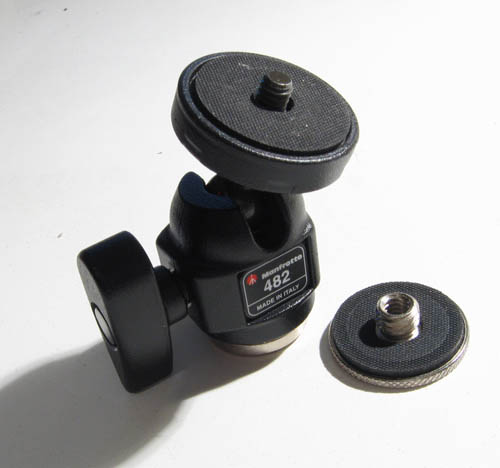
Top class Manfrotto 482 (Now replaced by 492) - 50 EUR (plus another 10 EUR for the thread adapter)
I tested it as replacement for a smooth head on a tripod and as short support (screwed on a piece of wood) for table testing of my ‘custom panoramic head’.
As I used more and more the “short support” (to test macro lens) and did not like to periodically cannibalize the tripod, I purchased two cheap Chinese mini ball heads to replace the Manfrotto 482 on my piece of wood.
Of course if the 492 is of the same quality as the 482, the Manfrotto is definitely the best purchase if you can afford it. But if you do not want to fork the required 50 EUR, which one of the Chinese contenders is the best?
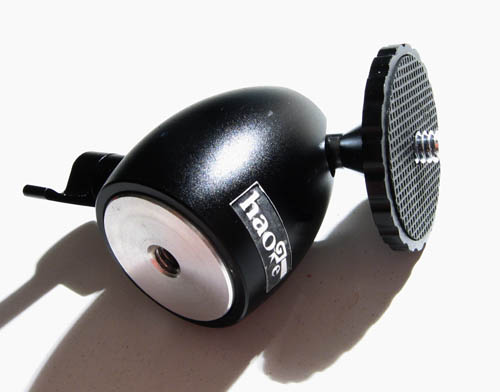
Sexy looking Haoge - 9 EUR
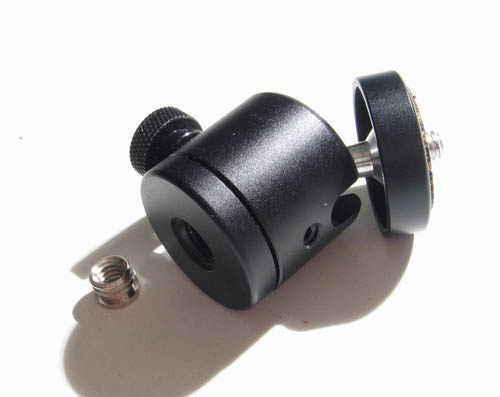
Little no-name - 5 EUR
The sexy looking Haoge at 8.5 EUR or the little no-name ball head at 4.5 EUR?
Asking the question like this will make you guess that the winner is not the sexy stuff. But are you willing to know why and do you think others will also want to know? :=)
The main reason being that with the Haoge your camera will have a fair chance of hitting the ground with the full force of gravity and of course, no way to guess it from the pictures or from the specifications.
On the Haoge the difference between clear free movement and lock is 90 degrees (1/4 of turn).
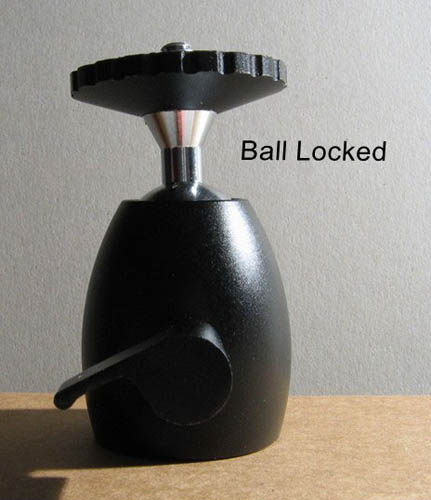
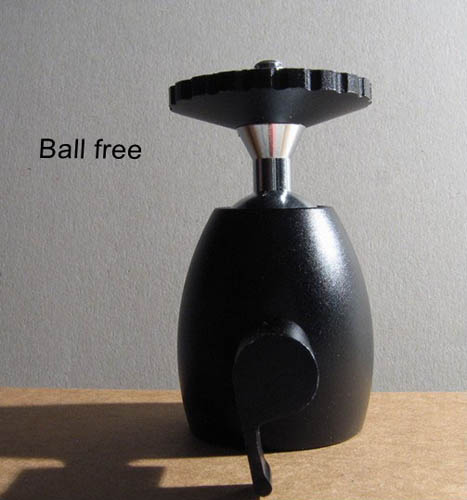
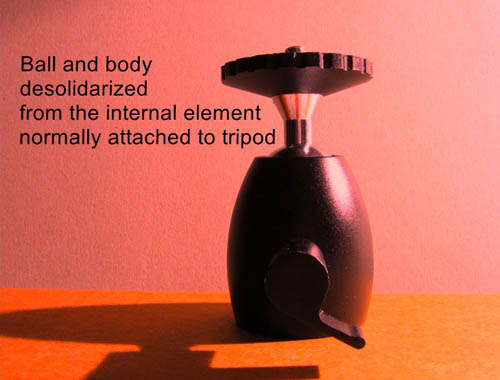
At 135 degree (Less than 1/2 turn) the body and the ball (and camera) are loose from the core (and the tripod)! This could result in the ball and core separating, with the ball (and your attached camera) falling to the ground.
The Haoge is made of 5 pieces:
- the ball and the screw for the camera + circular plate
- the core attached to the tripod (a diabolo shape: flat at the bottom (tripod side), a spherical cup on the top (ball side))
- the body containing the core and the ball
- a locking screw attacking the core on the flank of the top cone of the diabolo so that it lowers the body on the diabolo so that the ball is squeezed.
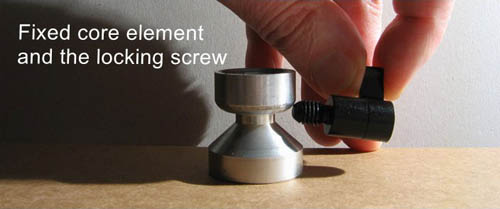
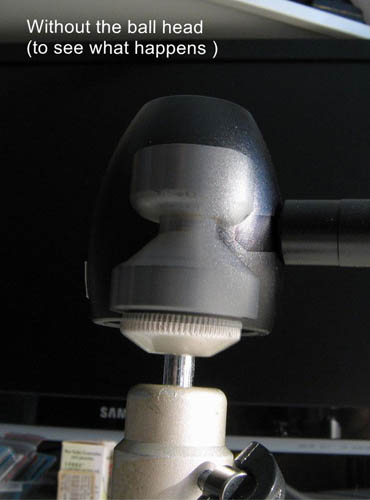
Central core and body can be locked with locking screw fully engaged
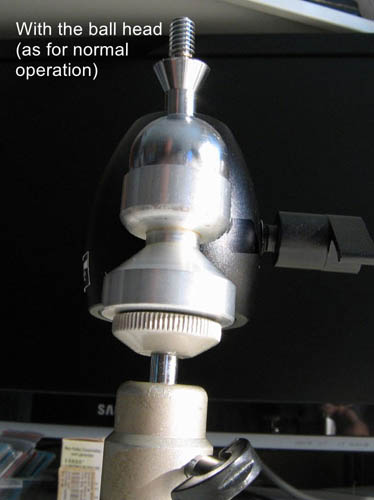
Ball and body cannot be locked with the locking screw fully engaged
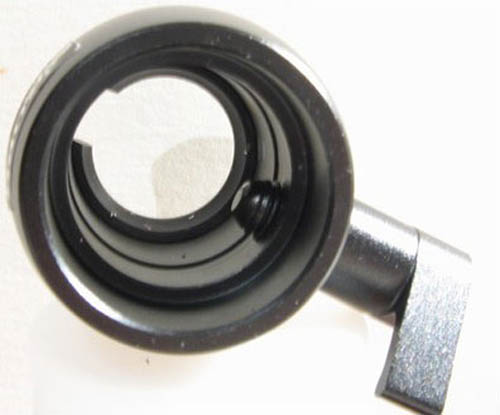
This relatively safe position of the locking screw cannot be reached when the ball is in the device
As you can see from the images above, the Haoge mini ball head has a serious design flaw. (The seller I purchased it from stated this is how the product is designed, and refunded me). Either the shape of the top part of the core is wrong, or the bore of the locking screw is too high, or both.
On the no-name (the bore is visible) and on the Manfrotto (I suppose it is hidden under the label), there is an additional fixed screw, which prevents the disassociation even when the locking screw is removed.
In terms of other features, the camera-mount screw on the Haoge has a low number of threads (only 3), but this is fairly common for mini ballheads like this. The camera can still be securely attached, though a taller screw would be preferable. For attaching a clamp, the solution is to unscrew the circular plate and attach the clamp directly on the screw. In this case the screw protrudes on the clamp providing the safety needed when using the L plate. :=)
The no-name ball head is okay, but as you might expect, the movement is not as smooth as the Manfrotto.
On the Manfrotto the locking pressure is applied smoothly. You just turn the knob and it locks the ball. On the no-name and the Haoge, you feel that you must apply some pressure to pass from free to the lock phase with some intermediate 'false-lock' positions. The plastic handle of the Haoge will certainly not stand too much of this. The knob on the no-name is OK so that it is not a problem.
On the cheap Chinese mini ball heads, the balls grip a little bit. On the Manfrotto, the movement is very smooth. But maybe it is simply due to the fact that the movement is greased on the Manfrotto, while on the cheap Chinese heads it is dry.
The no-name ballhead has a 3/8″ thread on the bottom, and comes with a 1/4″ adapter. The Manfrotto has a 3/8″ thread, and requires you to purchase a separate adapter if you want to use it on a 1/4″ bolt. The Haoge has a 1/4″ thread on the bottom, which makes it tricky if you want to use it on a larger 3/8″ bolt. All three have the standard 1/4″ threaded screw on top, suitable for attaching a camera.
The Haoge was purchased from eBay seller 'Yelfoto-pro'. The no-name ballhead can be found from eBay seller 'thousand-spray': New 360 Swivel Mini Ball Head 1/4" Screw for DSLR Camera Tripod Ballhead Stand.
For 4.5 EUR, the no-name is pretty good. Also the real color is a classical civilian black, as per my photo, not the greenish color of some of the pictures you can find on the websites selling it.
The Haoge can only be used in a controlled environment with the core attached vertically with the bottom down (not upside down or horizontally for instance). Never in the field.

Leave a Reply